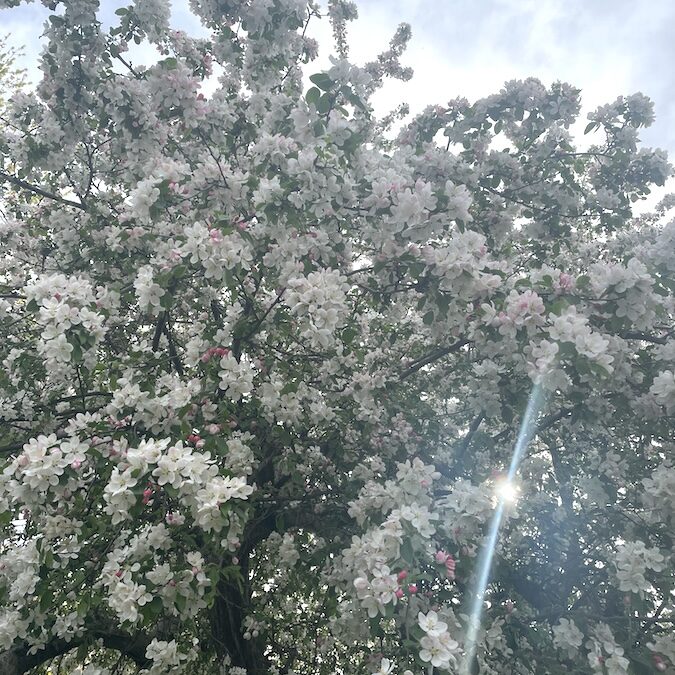The mystic’s path is a path marked by authenticity and aligned to virtue for the higher spiritual purpose of connection to God and for soul growth. Often times, a mystic comes into knowledge that is well ahead of its time, and as such, a mystic accepts the release of own’s attachments from the opinions of others – because the mystic’s insight is not one to be perceived by everyone anyway.
Renunciation is a most powerful thing you may do if you want to be a true mystic. There are many ways to do this, and if does not necessarily need to be celibate or renounce all the material world, nor be a strict ascetic in a traditional sense – so today we’ll dive into the meaning and purpose of renunciation, also known as sanyasa, and how you may incorporate this practice in your daily life in a way that is aligned to your own unique walk of life.
So first of all, what is the purpose of renunciation anyway? It’s to create a pure vessel within you aligned to your spiritual core, higher values, and connection to God. The bigger the ego you have and the more you may want to talk about spiritual topics for the purpose of fame, likes and power, the worse mystic and intuitive you may become, because the intention is not the right one; and eventually, it will be precisely these intuitive abilities and spiritual powers that may become your detriment and destroy you. This is called ego centric psychism – i.e. you tune into the clair senses from the tainted intention of ego aligned to selfishness and external motivations.
Someone once asked a spiritual teacher, “Teacher, are there any masters such as Jesus or Buddha in our modern world?”, and the teacher smiled and replied, “Well, why shouldn’t there be? If you know how and where to find them, yes; but do not expect to see them on the big stages and social media for their insight is not meant for everyone, and it is your work to develop yourself in order to then seek them, find them, recognize them and be able to receive the spiritual insight. They will not have their voices loud and be out there for everyone, because that’s not what true mystics are.”
Think about his statement – Jesus barely had twelve followers, and I say barely because one of them betrayed him. And how famous do you think Lao Tzu was in his time? Not a lot, and people did not know much about his life. The appreciation and recognition of a mystic and their spiritual insight often takes longer to integrate in the collective consciousness. People need to first build the capacity within themselves to receive it, and only then they will. Otherwise it goes from one ear and comes out the other. To receive the spiritually pure you need to become the spiritually pure, or at the very least, build the space within you for at least one light ray to enter you.
God’s light is as soft and subtle as butterfly wings on your shoulder or strand of hair. Be mindful of the false light. No one with so called psychic powers will be advertising them; no one with spiritual abilities will be shouting them loud nor collecting likes and followers; no one with real knowledge will be shrinking it to one square posts on social media.
The higher planes do not work with someone whose orientation, whether conscious or unconscious, is ego centric psychism or mysticism. The bigger the spiritual ego the bigger is the channel for you to pull into your field the lower planes, because this is their realm – that’s how they operate, this is their resonance. And we cannot “channel” anything we are not already in capacity to hold within us; and to perceive something we need to have it already awakened within us in some shape or form.
So if you want to perceive and receive and be attuned to the higher planes, you have to rise to meet them. They seek you. But you need to rise to meet them. The way to rising is to live a rightful life, a life of virtue, and you need to renounce the selfishness and attachments to being liked, to fame, to instant gratification, to greed and lust, to status, to belief systems, to literalism, to all of it. One by one, step by step, you say take it. Take the money, take the free content, take my teachings, take my generosity, take it all.
You will be challenged and each time you will choose God, you will choose service – because you build your strong spiritual core knowing your truth and why you do what you do. That’s the path of the mystic.
The more you renounce, the more you become the vacuum for God and the higher planes that seek you to work through you for humanity. If you want to be a good mystic, that’s the rightful path. And when the material comes to you, when you are paid and receive recognition and generosity and money, thank it for it is a blessing and helps you on your path forward. Spiritual powers enter you even more and become stronger only through the clarity and purity of the vessel you build within yourself.
Now let’s go over what asceticism, renunciation and sanyasa mean, and whether it is right for everyone, and how to apply it in your own life according to your unique path. Do you need to be celibate forever, vegetarian, renounce relationships and live in a cave? No. But – it is about the purity of your own heart and intentions, and living in virtue – this is what the essence of renunciation is.
Sanyasa, or sannyasa, is a form of asceticism marked by renouncing material pleasures and prejudices; and is often seen as a detachment or disinterest from the material life for the purpose of spiritual development, growth and focusing the attention, time and energy on one’s spiritual pursuits. In a natal chart, the astrological combination showing Sanyasa yoga is a stellium of four or more planets out of the personal seven planets in one sign and house.
Sanyasa, or renunciate, is the fourth stage within the Hindu system of four life stages known as Ashramas; and the Ashramas system is one facet of the Dharma concept in Hinduism. The four stages are: Brahmacharya (student), Grihastha (householder), Vanaprastha (forest walker, forest dweller) and Sanyasa (renunciate).
Brahmacharya represented the student stage of life, where a person devotes to education, learning and often it may include the practice of celibacy. This is the phase in which a spiritual student begins their path of seeking, and is initiated into the path of learning – often by finding a spiritual teacher or guide, and spending years of learning the various practices – though often times this learning isn’t necessarily just through books and knowledge, it is about embodying the practices of patience, devotion, dedication and the virtues. The student or spiritual seeker acquires in-depth knowledge from various subjects such as science, philosophy, scriptures and logic, practicing self-discipline, volunteering and charity work, and learning to live a life of Dharma i.e. in righteousness, morals, integrity and duties.
From Brahmacharya, some people may go on directly to the Sanyasa, or may go on to the second and then third phases.
The second is known as Grihastha, which refers to an individual’s married life, learning the duties of raising a family, being loyal and committed to them, responsibility in family and home life, raising one’s children, and learning about relationships.
The third is Vanaprastha, which is about handing down the responsibilities to the next generation, and an individual takes on a more of an advisor form, slowly withdrawing and moving towards a greater emphasis or focus on spiritual life and interest in Moksha.
And then comes the Sanyasa, or the renunciate phase, where a person is exclusively focused on Moksha, spiritual pursuits, living a simple life of virtue and detaching from attachments related to the surface level of things.
Renunciation is a form of asceticism, which is often practices monks, but it is a gentler form of it, as asceticism is usually very strict regarding practices of the body and food, and is marked by strict self denial.
But to understand it better, let us understand what is the essence of asceticism?
The Essence of Asceticism
The literal meaning of asceticism is strong self-discipline and avoidance of all forms of indulgence. To apply this in non-religious ways, let’s understand its essence, starting from the rationale or purpose behind it. Part of it is fasting – and the rationale for a monk’s fasting is to cleanse and purify the body so that it becomes a match for the god-like virtues and for grace to live within us, and to be able to contain the higher consciousness.
Asceticism essentially gives the body glory, honour and the respect that it deserves. The body is a chalice. And depending on what you are filling it with, will become you. For Christian monks, they view their body as a chalice for Christ energy – and they need to bring their body to a specific purified level to be able to contain and sustain that consciousness. In other words, they cannot be filled with lust, gluttony, excess etc., if what they seek is to be filled with the unconditional Christed love, which requires clarity of mind and purity of heart.
This is the same for all of us in the way that if we want something we need to be the right match for it. How can we love if we don’t have the inner emotional capacity to love? Where can love even breathe if there is no space for it because of selfishness, greed, fear, doubt, distrust? We need clarity of mind, purity of heart and sincerity of action – for things to happen, and not just “happen” but then be able to be sustained in our life. That’s devotion and commitment. And love itself requires integrity, faithfulness, dedication, and discipline i.e. responsibility and self-accountability.
For the monks, they view the body to be just as important as the soul in this life. This is because this is a human life and our flesh and skin are what make us human beings. Otherwise we are only spiritual beings. So when we as spiritual beings are dressed in our human bodies, we become the marriage of flesh and heaven, a heaven embodied on earth, and our bodies become just as important as the soul.
This means to have self-respect and be selective with intimate partners, don’t give yourself to all and everyone unless that’s your pure and true intention. Be mindful, conscious, love consciously.
The purpose of the body is also to show us that we need to not only imagine spiritual life, we need to do the actual work, to apply spiritual wisdom into our human relationships and live that through our gestures, words and hands. It means embodied love. So build love, contain love, emit love – in other words, walk the talk. You are not here to become spiritual, you already are – you are here to apply that spiritual wisdom towards your relationships, and hopefully, to stay aligned to your values and self-respect.
Is Sanyasa right for you, and how to incorporating the practice in your every day life
The truth is that you do not have to be an ascetic to be a spiritual seeker, teacher and guide. For some people it is not appropriate – because they have already spent life times in renunciation, from which they have gathered spiritual knowledge and wisdom, and in this life perhaps they are meant to experience the physical pleasure and senses and build their self value through being self sufficient financially as well. They will naturally still be in spiritual fields, perhaps lead very quiet lives, but that doesn’t mean they will never marry – they just have specific values about the kind of person they will choose to settle with, and they will surely enjoy the material beauty of life, but they are just not dependent on it.
For example, they may choose to buy themselves something nice and luxurious, but they are not dependent on their lower urges and possessions in any way. They may choose to enter in intimate relationships but they usually do it with a partner whom they feel deeply connected to on a soul and emotional level, and don’t mind spending years in celibacy until they find this partner. Again – they do not depend on the external, and while they enjoy it, they are driven by different motivations and focused mainly on service.
The essence of these practices is alignment to virtues and higher values – and leading a right life of service and spiritual truth. It isn’t about denying your body what it needs for food, it isn’t about denying the material world because the material is a part of the spiritual – it feeds you, it nourishes you, and if you have indeed spent life times as a renunciate, then you need to now appreciate the material life and life through your senses – so it is about balance. Absolutism sinks us in the water like stones.
So for each person this may play out differently, but it is about balance, and balance is a dynamic thing, not static. So in various phases of your life you may be called in different ways. It isn’t about detaching from your responsibilities towards your parents, children and spouse – you should be present for them, care for them, tend to them. This is actually your karma to do – this too is part of a spiritual path and how you contribute and are of service in this world. Perhaps your higher purpose is to be a spouse, a lover, a parent – to raise your beautiful family and love them, and show them what love is, and give them the space within which they may grow up and come into their unique potential. This is a high path indeed.
Everything in life is a relationship. We are not here to become spiritual – we already are – we are here to awaken this, recognize this, develop it and embody the wisdom, and apply it towards our relationships and every day life. A monk too enters into a relationship with the monastery, everyone is here to experience ourselves through the otherness.
So the essence of renunciation is to know who you are, know your values, build your strong spiritual core, and walk a life of truth and virtue. Renunciation isn’t about no desires – because even “no desires” is a desire to have no desires, right?
This entire universe is built upon desires. You are here because of desire – your father and mother desired you, their prayers and their hearts’ wishes desired you, and the prayers of your ancestors also desired you. The plants, the animals, procreation, all in this world and nature is because of desire. This is the basis of our planet. Sand desires waves, and waves desire wind, and roses desire bees, and snowdrops desire snow. Even when we say “I want liberation from all desires” this too is a desire. But – thoughts are not desires, ego is not desire, urges are not necessarily desires, compulsions are not desires, identifying ourselves to our desires is not helpful and not of pure divine desire, so this is where the essence of renunciation comes in – which is to renounce the built-in structures to which we bind ourselves to.
Desire is not a bad thing when it is pure desire from our heart; because this is how we are guided forward on our path. And there will a day when you become desire; just as the dancer becomes the dance itself, and the dreamer becomes the dream itself.
For personal readings with me, you are welcome to browse through my Offerings.
Cover photograph by me.

For more of my writings, browse through my Art of Love.
If you wish to support me and my work, you may do so by sharing it or donate here. For personal readings with me, you may visit my Offerings.
Your support means so much to me! Thank you wholeheartedly!




